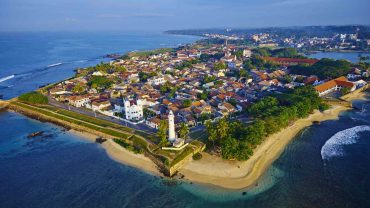Sigiriya, often referred to as the “Lion Rock,” is a UNESCO World Heritage Site and one of Sri Lanka’s most iconic landmarks. Rising dramatically from the surrounding plains, Sigiriya is a captivating blend of ancient architecture, breathtaking natural beauty, and historical significance.
At the heart of Sigiriya is the ancient rock fortress, built by King Kasyapa in the 5th century AD. The fortress is perched atop a towering rock column, accessible via a series of staircases and pathways adorned with intricate frescoes, ancient graffiti, and landscaped gardens. The highlight of the climb is the Lion Gate, where visitors pass through massive lion paws carved into the rock, giving the fortress its name.
Upon reaching the summit, visitors are rewarded with panoramic views of the surrounding jungle and countryside, as well as the remnants of the ancient palace complex. The site’s central feature is the remains of the king’s palace, including the throne platform and the remnants of the royal chambers.
Surrounding the rock fortress is a vast network of gardens, reservoirs, and defensive structures, all designed to showcase the ingenuity and sophistication of ancient Sri Lankan civilization. The Sigiriya site also includes the nearby Pidurangala Rock, offering additional hiking opportunities and stunning views of Sigiriya from afar.
Sigiriya’s historical and architectural significance, coupled with its natural beauty, make it a must-visit destination for travelers exploring the cultural treasures of Sri Lanka.
Sigiriya, Sri Lanka, Lion Rock, UNESCO World Heritage Site, ancient fortress, Sigiriya Cave Temples, Buddha statues, wall paintings, nature, outdoor activities, historical landmarks.





Comment (0)